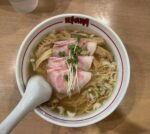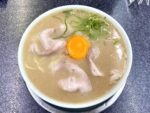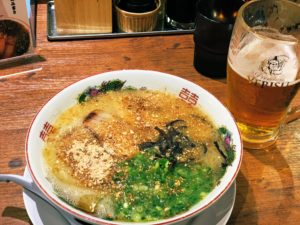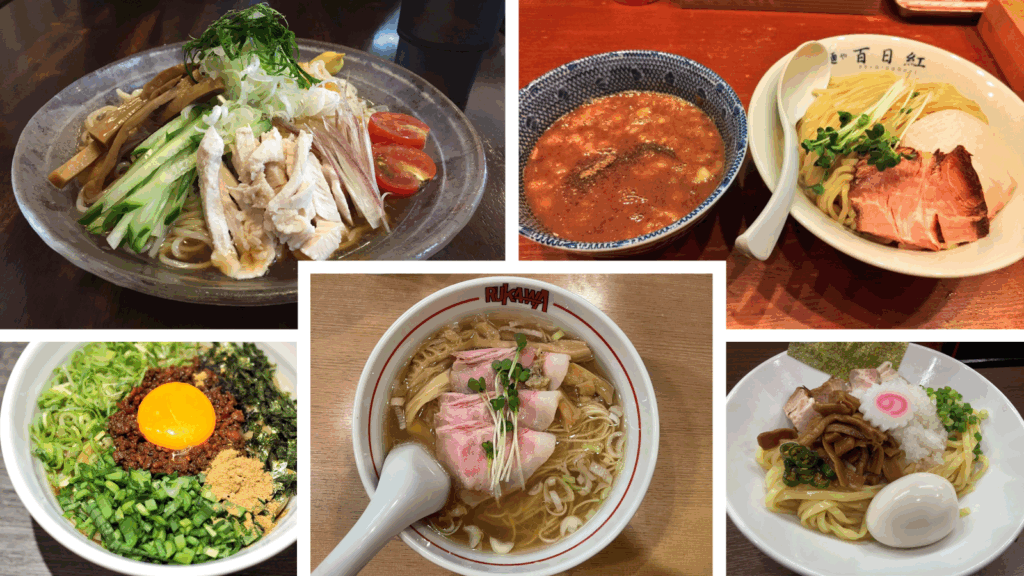
Japan is a noodle paradise, and visitors often get confused by the different styles available. While ramen is the most famous, Japan also offers unique varieties such as tsukemen, mazesoba, abura soba, and hiyashi chuka. Each dish has its own flavor, texture, and way of eating. Here’s a delicious guide to help you understand the differences!
🍜 Ramen – The Classic Favorite
- What it is: Hot noodles served in a flavorful soup.
- Soup base: Can be soy sauce (shoyu), miso, salt (shio), or pork bone (tonkotsu).
- Why it’s delicious: The warm broth, seasoned to perfection, soaks into the noodles. Toppings like chashu pork, soft-boiled egg, bamboo shoots, and seaweed add richness.
- Best enjoyed when: You want something comforting and hearty, especially on a cool day.
👉 Ramen is Japan’s soul food — satisfying, warming, and endlessly customizable.
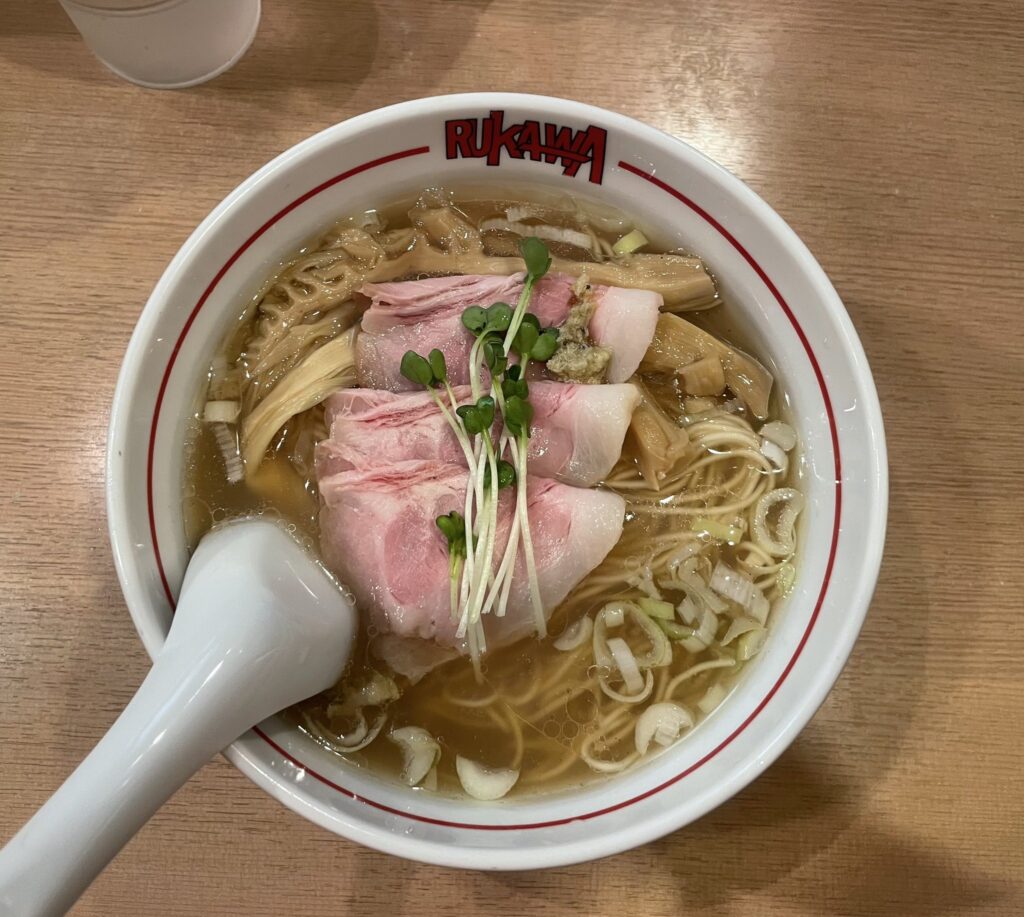
🍜 Tsukemen – The Dipping Style
- What it is: Noodles and soup are served separately. You dip the cold, chewy noodles into a hot, thick dipping broth.
- Why it’s delicious: Because the noodles are served cool, they stay firm and springy. The concentrated dipping broth is usually richer and more intense than regular ramen.
- Best enjoyed when: You want to savor noodles with a strong, punchy flavor.
- Fun fact: Many shops offer large portions (oomori) for free, so it’s perfect if you’re extra hungry.
👉 Tsukemen feels almost like a noodle “experience,” letting you control how much broth you want with each bite.
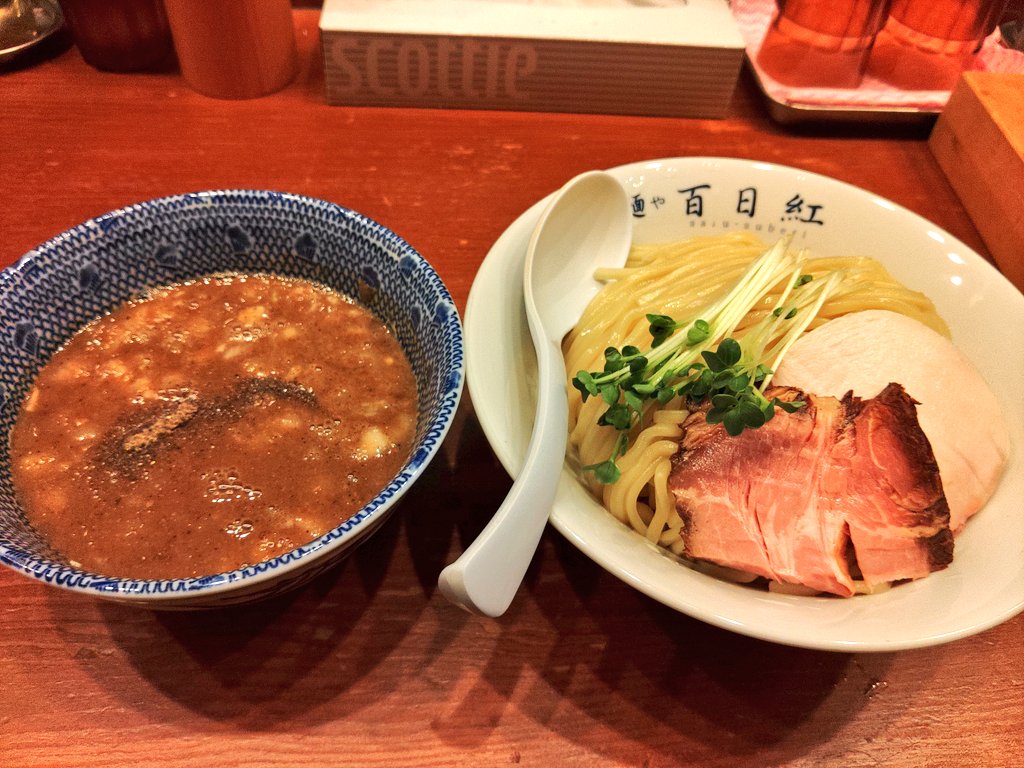
🍜 Mazesoba – The Soupless Ramen
- What it is: Thick noodles topped with minced pork, green onions, garlic, nori, egg yolk, and seasonings — but no soup. You mix everything together before eating.
- Why it’s delicious: Every bite bursts with flavor — savory, spicy, and slightly creamy. Mixing the toppings coats the noodles in a rich sauce.
- Best enjoyed when: You want something bold, filling, and less soupy.
- Fun fact: After finishing the noodles, many shops let you add a small bowl of rice (oimeshi) for free, so you can enjoy every last drop of sauce.
👉 Mazesoba is ramen’s rebellious cousin — messy, flavorful, and unforgettable.
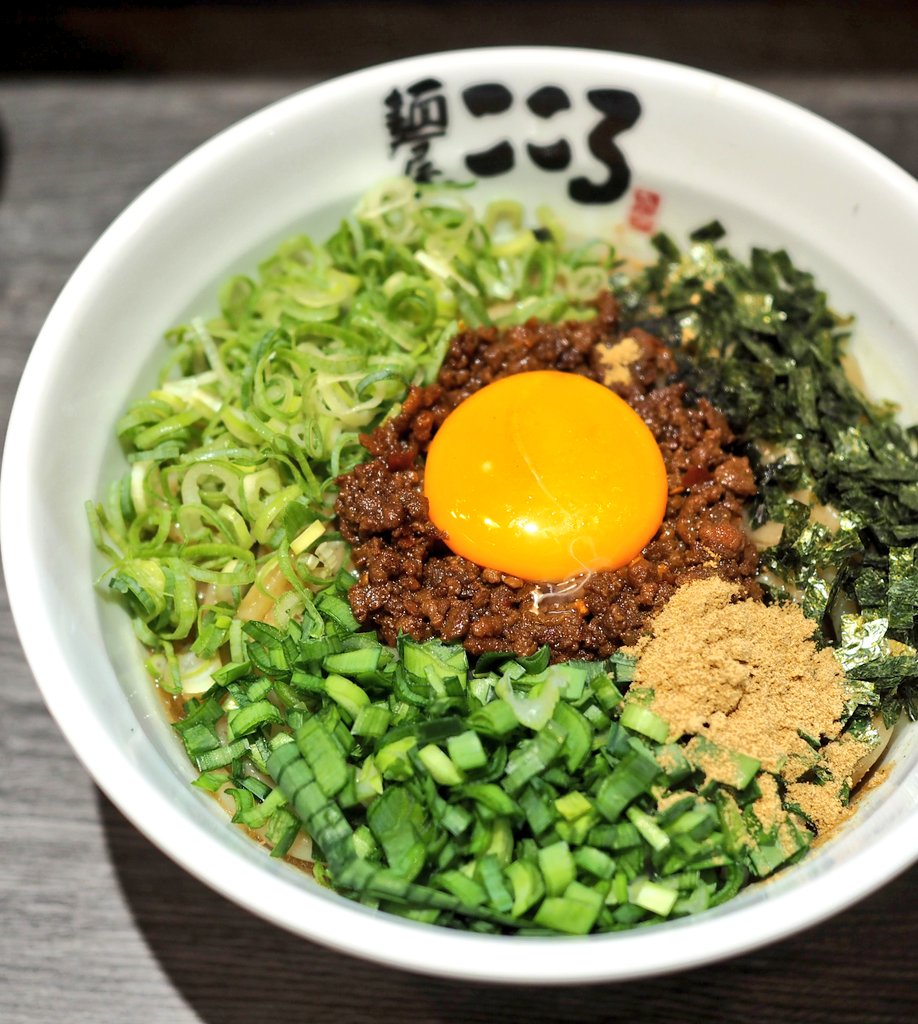
🍜 Abura Soba – The Dry Ramen
- What it is: Literally “oil noodles,” but not too oily! Served without soup, the noodles are seasoned with soy sauce, sesame oil, and vinegar, then topped with ingredients like chashu, menma, green onions, and nori.
- Why it’s delicious: Simple but addictive — you mix the noodles with the fragrant sauce, creating a light yet flavorful meal. Compared to mazesoba, abura soba tends to be less heavy and more refreshing.
- Best enjoyed when: You want ramen flavors without a heavy soup.
- Fun fact: Many abura soba shops encourage you to add vinegar and chili oil at the table to adjust the flavor — a DIY taste adventure!
👉 Abura soba is the minimalist sibling in the ramen family — lighter than mazesoba, but still deeply satisfying.
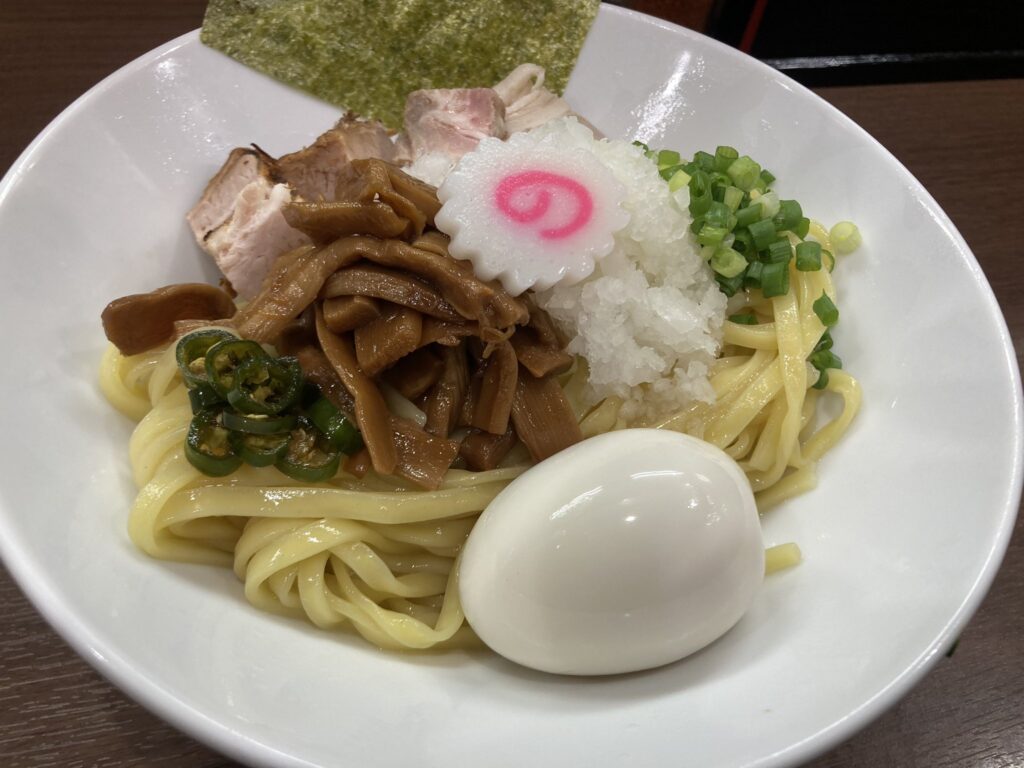
🍜 Hiyashi Chuka – The Summer Classic
- What it is: Cold noodles served with colorful toppings like sliced cucumber, ham, egg, tomato, and crab stick. The dish is dressed with a refreshing soy-sesame or vinegar-based sauce.
- Why it’s delicious: Light and refreshing, with a balance of sweet, sour, and savory flavors. Perfect for hot weather.
- Best enjoyed when: Summer heat makes a steaming bowl of ramen too heavy.
👉 Hiyashi Chuka is Japan’s version of a noodle salad — cool, refreshing, and perfect for summer.

🥢 Ramen’s Extended Family
All five dishes — ramen, tsukemen, mazesoba, abura soba, and hiyashi chuka — share a common root. They are variations or “spin-offs” of ramen, using the same type of noodles but changing the broth, toppings, or serving style.
- Ramen = the parent dish.
- Tsukemen & Mazesoba = hearty offshoots, focusing on the noodles themselves.
- Abura Soba = a simpler, lighter soupless version.
- Hiyashi Chuka = a refreshing seasonal twist.
This “ramen family” shows how creative Japanese food culture can be, turning one type of noodle into many unique dishes.
🥢 Final Tip for Travelers
If you’re visiting Japan, try them all! Each style offers a different way to enjoy noodles:
- Ramen warms your soul.
- Tsukemen highlights texture and dipping fun (often with free large portions).
- Mazesoba is rich and bold (don’t miss the free rice add-on!).
- Abura Soba is lighter, customizable, and full of flavor.
- Hiyashi Chuka cools you down in summer.
👉 In Japan, noodle shops often add little extras — more noodles, free toppings, or even rice — without extra charge. It’s one of the many reasons why Japanese noodle culture is both delicious and generous.


